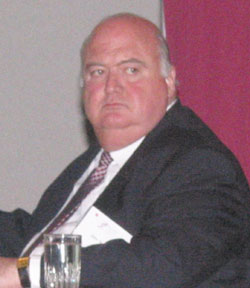
Wendy’s looks to the beef industry to help satisfy three consumer needs — good taste, a safe product and cost stability, said Kevin Brost, Wendy’s International director of supply chain management.
Meeting consumer needs
 Wendy’s looks to the beef industry to help satisfy three consumer needs — good taste, a safe product and cost stability, said Kevin Brost, Wendy’s International director of supply chain management. |
Working to increase demand
 The consumer is the only genuine or new source of wealth for the beef industry, said John Huston, former executive vice president of NCBA. |
– by Angie Stump Denton